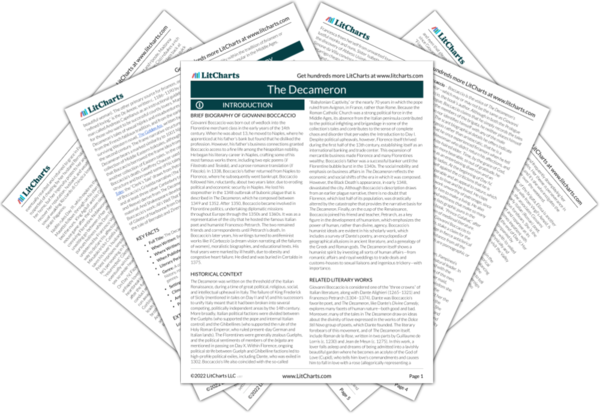Friar Cipolla’s speech is studded with malapropisms (the humorous misuse or distortion of a word) and false wonders. His ornate style informs
The Decameron’s anticlerical satire, calling into question how readily anyone should believe a religious authority, no matter how impressive they sound. And, since the citizens of the village hang on his every word, it also carries a class-based criticism of commoners’ lack of education and judgment. Friar Cipolla’s itinerary passes through a mix of nonsensical, made-up places like Liarland, Bordello (a brothel), and Bedlam (a madhouse), and real places described as supposedly marvelous, including Abruzzi (where, following medieval implications of “clogging,” everyone is homosexual) and the Basque mountains where water flows downwards (as it does everywhere, thanks to gravity).


